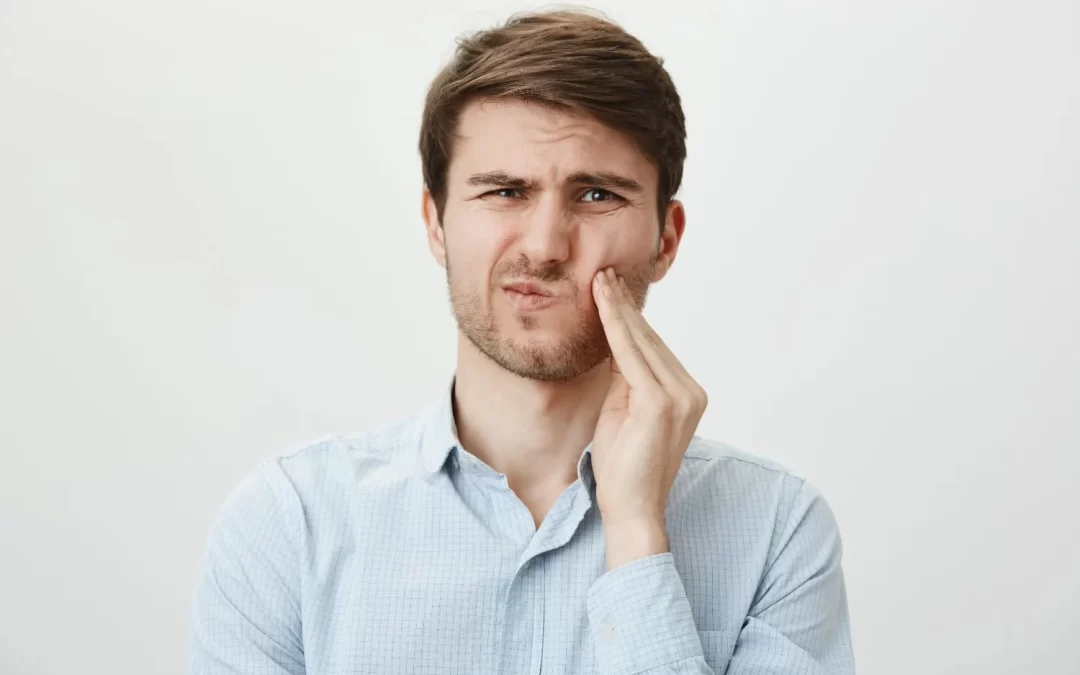Tooth decay, or cavities, is a pervasive dental issue impacting millions globally. Though initially painless, untreated decay can progress to cause significant discomfort, affecting your daily life. This blog delves into what tooth decay pain feels like, why it happens, its progression, and how to treat and prevent it.
What is Tooth Decay and Cavity Pain?
Tooth decay occurs when bacteria in the mouth produce acids that erode the enamel, the tooth’s protective layer. Left unchecked, decay advances to deeper layers, exposing nerves and causing pain.
Cavity pain typically arises when the enamel is breached, and the underlying dentin or pulp becomes inflamed or infected. This pain often escalates without timely intervention, leading to severe complications.
Understanding Why Cavities Hurt
Cavities hurt due to several reasons:
- Nerve Exposure: As decay progresses, the inner layers of the tooth, including the pulp, become exposed, triggering sharp or persistent pain.
- Bacterial Infection: Bacteria can infiltrate the pulp, causing inflammation (pulpitis) and pressure buildup within the tooth.
- Pressure Sensitivity: Decay weakens the tooth structure, making it more prone to pain when biting or chewing.
Not all cavities cause immediate pain. “Silent cavities” may exist without symptoms until the damage becomes severe.
What Does Cavity Pain Feel Like?
Cavity pain can vary depending on the stage of decay. Some people experience:
- Sharp, localized pain when biting into food.
- Throbbing discomfort that lingers, especially at night.
- Sensitivity to hot, cold, or sugary foods and drinks.
This discomfort can range from mild irritation to severe pain that interferes with eating and speaking.
The Stages of Tooth Decay
Tooth decay progresses through identifiable stages, each with distinct symptoms:
- Initial Demineralization:
The earliest stage involves mineral loss in enamel, visible as white spots. Pain is typically absent. - Enamel Decay:
As enamel breaks down, cavities form. You might notice sensitivity to temperature changes. - Dentin Decay:
When decay reaches dentin, discomfort increases due to its proximity to nerves. - Pulp Damage:
At this stage, the pulp becomes inflamed, causing severe pain and possibly infection. - Abscess Formation:
An untreated infection can lead to an abscess, characterized by intense pain, swelling, and sometimes fever.
When and Why to See a Dentist
When to Call Your Dentist
Immediate dental care is essential if you experience:
- Persistent or severe tooth pain.
- Swelling around the affected area.
- Signs of infection, such as fever or pus discharge.
Why Timely Dental Visits Matter
Delaying treatment can lead to complications, such as needing a root canal or even losing the tooth. Addressing cavities early not only relieves pain but also prevents costly treatments.
Managing Tooth Decay Pain Before Your Appointment
If you’re unable to see a dentist immediately, consider these remedies:
Home Remedies for Temporary Relief
- Over-the-Counter Painkillers: Medications like ibuprofen or acetaminophen can help alleviate pain.
- Saltwater Rinse: Gargling with warm saltwater can reduce inflammation and cleanse the area.
- Cold Compress: Applying a cold pack to the cheek can help numb the pain and reduce swelling.
Innovative Techniques
- Dental Wax: This can cover sharp edges of damaged teeth, reducing irritation.
- Clove Oil: A natural analgesic, clove oil can temporarily numb tooth pain.
Professional Treatment Options
What to Expect at the Dentist Appointment
Your dentist will perform a thorough examination, including X-rays, to assess the severity of the decay. Treatment options may include:
- Fillings: For early-stage cavities, a filling restores the tooth’s structure.
- Root Canal: In cases of pulp damage, this procedure removes the infected tissue and seals the tooth.
- Extractions: Severely damaged teeth may require removal.
- Advanced Methods: Laser cavity removal offers precision with minimal discomfort.
Preventing Tooth Decay and Related Pain
Prevention is the best strategy for avoiding tooth decay and its associated pain:
- Daily Oral Hygiene:
- Brush twice daily with fluoride toothpaste.
- Floss daily to remove debris and plaque.
- Dietary Choices:
- Avoid sugary and acidic foods.
- Opt for calcium-rich foods to strengthen enamel.
- Regular Dental Visits:
Routine check-ups and professional cleanings can detect and treat early signs of decay.
FAQs
Why does tooth decay pain come and go?
Pain intensity may vary depending on the severity of decay or exposure to triggers like hot or cold foods.
Can cavities heal on their own?
No, professional treatment is necessary. Early-stage demineralization can be slowed with fluoride but not reversed without intervention.
How soon should I see a dentist if I suspect a cavity?
As soon as possible. Early detection prevents complications and reduces treatment costs.
Are children more prone to cavity pain than adults?
Yes, due to thinner enamel and inconsistent oral hygiene habits as well as more frequency of having sweet food.
Conclusion
Tooth decay pain is a common but preventable condition. By understanding its causes, symptoms, and treatment options, you can take proactive steps toward maintaining oral health. Regular dental check-ups and good oral hygiene are crucial in preventing and managing cavities. If you’re experiencing tooth pain or suspect decay, don’t delay – contact OROSMYLE DENTAL CLINICS for expert advice and compassionate care. Prioritize your dental health today for a brighter, pain-free tomorrow!

